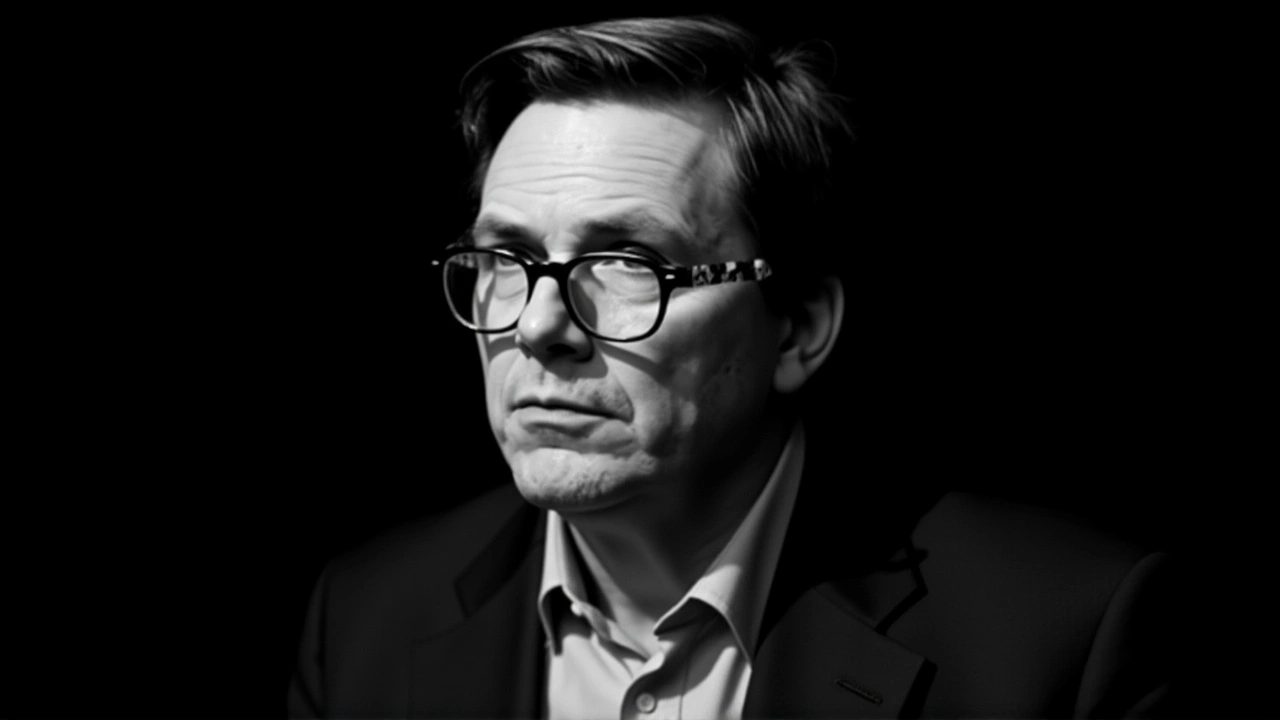On Wednesday, November 19, 2025, communities around the world will observe International Men's Day under the theme 'Celebrating Men and Boys'—a call not just for recognition, but for urgent action. The day, confirmed by the official International Men's Day website (internationalmensday.info), NDTV, and Wikipedia, arrives at a moment when male suicide rates in the U.S. and U.K. remain more than three times higher than female rates, and life expectancy for men continues to lag behind women by nearly five years in many developed nations.
Why November 19? A Day Rooted in Quiet Crisis
Unlike holidays tied to historical battles or royal birthdays, International Men's Day was deliberately placed on November 19 to honor the birthday of renowned Trinidadian historian and activist Dr. Jerome Teelucksingh, who revived the observance in 1999 after its earlier, fragmented beginnings in the 1990s. But the date’s significance goes deeper. It lands just after Thanksgiving in the U.S. and before the holiday season’s emotional weight settles in—a time when isolation spikes, and men, conditioned to stay silent, are least likely to reach out.
The UK Men's Day organization (ukmensday.org.uk) puts it bluntly: “Caring for men cares for everyone.” That’s because men are disproportionately represented in every crisis category: 78% of homeless adults in the U.S. are men; over 80% of workplace fatalities involve males; and boys account for nearly two-thirds of school exclusions in England. The 2025 theme doesn’t just celebrate—they’re sounding an alarm.
The Six Pillars: More Than a Checklist
At the heart of International Men's Day are the Six Pillars, a framework that’s more radical than it sounds. It’s not about pitting genders against each other—it’s about dismantling systems that hurt everyone.
- Positive role models: Beyond athletes and actors, the movement highlights teachers, single fathers, construction workers, and nurses—men who show up quietly, every day.
- Contributions to society: From volunteering in food banks to mentoring at-risk youth, men’s unpaid labor is rarely counted—but it keeps communities alive.
- Health and wellbeing: Men die earlier from heart disease, cancer, and liver disease—not because they’re weaker, but because they delay checkups by an average of 2.3 years compared to women, according to CDC data.
- Discrimination: In custody cases, men are 70% less likely to gain primary care of children. In shelters, male victims of domestic violence often face disbelief or outright denial of services.
- Gender relations: The goal isn’t to replace patriarchy with matriarchy—it’s to replace rigid roles with shared responsibility.
- A safer world: This isn’t abstract. When boys learn to express grief without shame, fewer grow up to become perpetrators of violence.
These pillars aren’t theoretical. In Glasgow, local charities have launched “Men’s Sheds”—workshops where unemployed or lonely men repair furniture, talk about divorce, or just sit in silence with tea. Suicide rates in participating neighborhoods dropped 19% in two years. In Australia, school programs teaching emotional literacy to boys aged 10–14 saw a 31% reduction in bullying incidents and a 27% rise in help-seeking behavior.
What’s Being Done—and What’s Missing
Organizations like International Men's Day and UK Men's Day have spent years pushing for policy changes: better mental health funding for men, gender-neutral domestic violence services, and mandatory emotional health modules in schools. But progress is uneven.
While the U.K. government allocated £10 million in 2024 for male mental health initiatives, the U.S. federal budget still dedicates less than 2% of its mental health funding to programs specifically targeting men. Meanwhile, social media campaigns like #ItsOKToTalk and #BreakTheSilence have gone viral—but without funding, they’re just hashtags.
“We’ve made men feel like their pain is a weakness,” says Dr. Marcus Lyle, a clinical psychologist in Manchester who runs a male-focused therapy group. “But the truth? The bravest thing a man can do is say, ‘I’m not okay.’ That’s what this day is really about.”
The Ripple Effect: Why This Matters to Everyone
When men are healthy, families are healthier. Children with emotionally available fathers are 50% more likely to graduate high school and 75% less likely to end up in prison, according to longitudinal studies from the University of Michigan. When men feel safe expressing vulnerability, partners feel less burdened. Employers see lower absenteeism and higher productivity.
And yet, the stigma persists. In a 2024 survey by the American Psychological Association, 62% of men aged 18–35 said they’d avoid therapy because they feared being seen as “weak.” That’s not just personal—it’s systemic.
This year, International Men's Day isn’t just about awareness. It’s about accountability. Schools are being asked to teach emotional resilience. Employers are being urged to offer mental health days without stigma. And communities are being challenged to stop asking, “Why don’t men talk?” and start asking, “Why didn’t we create a space where they could?”
What’s Next? The Road to 2026
By next year, the International Men's Day network plans to launch a global database tracking male health outcomes by country—a first of its kind. They’re also pushing for a UN resolution recognizing November 19 as an official international observance, a move that could unlock funding and policy leverage.
In the meantime, local actions matter most. In Chicago, a group of fathers started “Dads’ Circle,” weekly meetups where men share parenting struggles without judgment. In Nairobi, youth groups are using hip-hop to teach boys about consent and emotional control. In rural Ireland, GAA clubs now host mental health talks after weekend matches.
The movement isn’t loud. It doesn’t need to be. It’s quiet. It’s persistent. And it’s working.
Frequently Asked Questions
Why is International Men's Day on November 19 and not another date?
November 19 was chosen to honor Dr. Jerome Teelucksingh, the Trinidadian academic who revived the modern observance in 1999. The date also strategically falls after Thanksgiving in the U.S. and before the holiday season, a period when male isolation and suicide risk peak. Unlike holidays tied to historical events, this date was selected for its psychological relevance to men’s mental health.
How does International Men's Day differ from International Women's Day?
While International Women’s Day often focuses on historical inequality and systemic barriers faced by women, International Men’s Day addresses the hidden toll of traditional masculinity—higher suicide rates, workplace deaths, custody bias, and emotional suppression. Both aim for equity, but they tackle different manifestations of gendered harm. The goal isn’t competition—it’s balance.
What are the biggest health risks facing men today?
Heart disease, prostate and testicular cancer, liver disease, and suicide are the top killers. Men are 3.8 times more likely to die by suicide than women in the U.S. and U.K., and they delay medical care by an average of 2.3 years. Alcohol misuse, workplace hazards, and lack of preventative screenings compound these risks. The 2025 theme directly targets these issues through education and open dialogue.
How can individuals support International Men's Day beyond social media?
Start conversations—ask the men in your life how they’re really doing, and mean it. Support local men’s groups, donate to organizations like Men’s Sheds or The Samaritans, and advocate for gender-inclusive mental health services in schools and workplaces. Even small acts—like sharing a resource or listening without fixing—can break the cycle of silence.
Is International Men's Day only for men?
No. The day is for everyone. Women, non-binary people, and children are vital allies. When society normalizes emotional expression in men, it frees everyone from rigid gender roles. Mothers, partners, teachers, and employers all play a role in creating environments where men feel safe to be human.
Has the theme 'Celebrating Men and Boys' been used before?
No—this is the first time the official theme has centered on boys specifically. Past themes focused on health or role models, but 2025’s emphasis on boys signals a shift toward prevention. Early intervention in schools and homes is now seen as critical to reversing long-term trends in male mental health decline.

